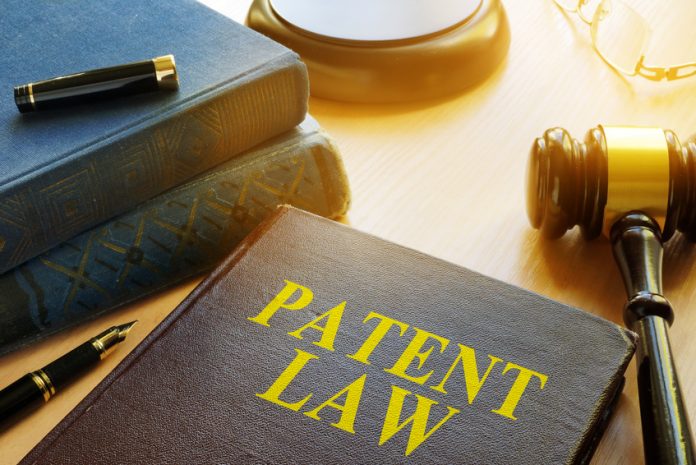This article is written by Namrata, pursuing a Diploma in Intellectual Property, Media, and Entertainment Laws from Lawsikho.com.
Table of Contents
Patent: Everything we need to know about
In the current scenario, patents tend to have enormous importance. This article sheds light on the concept of patenting a combination of two existing patents. It would be interesting to note that Glenn T Seaborg was the sole inventor of two patents. Seaborg was a Nobel prize-winning American chemist. The patents granted to Seaborg are considered to have the shortest independent claims ever.
A patent is a legal document issued to an inventor by the government. This right provides the inventor with an exclusive legal right to use and even sell his invention. Additionally, patents also have validity and expiry period. An inventor can make a patent claim to make improvements to his already existing invention.
The primary objective behind the patent is to acknowledge the individuals. The hard and fast rule for patenting remains the same around the world. It gives exclusive rights to the inventor and prevents others from recreating such an invention.
Various types of patents
Primarily there are three different kinds of patents available. They have been discussed below:
- Design patents– these patents deal with the surface and shape of the physical objects.
- Utility patents– Such patents cover inventions that have industrial applications. Nevertheless, India does not acknowledge utility patents.
- Plant patents– these patents include under their ambit asexually reproducing plants.
There are certainly other important facts about patents. A patent shall be granted to an inventor only if it meets certain requirements. These requirements are- Novelty, usefulness, and even inventiveness. These aspects have been discussed in detail in the following segment of the article.
Combination patent: What is it?
Patent law grants the ability to the inventors to have exclusive control over their inventions for a particular period of time. In the event the patent is obtained from the US Patent Office the duration is 20 years.
A combination patent is a patent that is granted to an invention that combines, modifies and boosts the usability of two existing patents. The components of such a patent function in an unexpected way to yield distinctive results. The two components work in unison. However, these two components remain distinct in the ways in which they function individually.
Further, a mere combination of two patents cannot guarantee a combination patent. If the working of the combination invention is the same as that of the individual functions of the two patents, then such a combination would not be eligible for grant of patent. This is because such a combination would not fulfil the non-obviousness and novelty criteria. Nevertheless, the combination inventions that meet all the below criteria would be successfully patented.
- Novelty– The term novelty signifies something new. An invention that is already known cannot be patented. It would be unethical to deliberate economic benefits from something that is already known.
- Inventive– If a particular invention is obvious to a skilled person, such an invention cannot be patented. The invention should be inventive in terms of the process used in coming up with the invention.
- Non-prior use– If the invention has already been in use, the same would not be qualified to be patented.
- Industrial Application– the term industrial application has been defined under Section (ac) of the Patents Act, 1970. The term signifies that such an invention must have practical utility. The invention must not be abstract.
History of combination patent
Obtaining a combination patent was more simplistic in the past. Nevertheless, in the current times, the process has become rather complicated. Various patent agencies and lawyers have been helping inventors in obtaining a patent for their inventions. This segment of the article shall discuss how the laws to obtain combination patents have evolved over time.
Combination patents: The 1999 standards
As per the 1999 standards, meeting the non-obviousness criteria was much simpler. According to the standards used by the US Patent Office and the lower courts, an invention would be non-obvious if there existed no prior teaching, suggestion, or even motivation in the art to combine the elements. This is also known as Teaching-Suggesting-Motivating (TSM) test.
Combination patent standards: Post-2007
The landmark case of KSR v. Teleflex changed the perspective of combination patents. The facts and the judgment of the case have been discussed below:
KSR v. Teleflex, 550 U.S 2007
Brief facts: Teleflex is a company in Pennsylvania. It held a patent which was a combination of two well-known elements. The two components were:
- An electronic sensor. It sensed and transmitted the position of the pedal to the car’s adjust computer.
- A gas pedal can be relatively adjusted depending on the driver’s seating position.
Another competitive company, KSR operated in the same market. KSR supplied General Motors with the same products, that is- Adjustable gas pedals. Teleflex filed an application to patent ‘adjustable pedal assembly with electronic throttle control’. The exact same components were also being used by KSR Company. The only innovative work accomplished by Teleflex was to combine these two obvious components and use them.
The issue before the court: Whether the combination of an adjustable gas pedal with a sensor on it can be considered obvious under the Patent Act, 1952?
Judgment– The Supreme Court was called upon to resolve the matter. The court decided that ordinary innovation cannot be patented. The court further stated that in the present case, the two components performed their ordinary individual functions. The only task undertaken by Teleflex was combining the two components. Hence, the Supreme Court ruled that the adjustable gas pedal was not patentable, even if it passes the TSM test.
This decision of the court in the KSR v. The Teleflex case brought a change in the way combination patents were granted. The court interpreted the term ‘Obviousness’. It was defined as an ordinary task accomplished by Teleflex. Once the judgment was delivered in KSR v. Teleflex, obtaining a combination patent became rather complicated. The inventors were required to showcase truly novel developments to obtain patents for their inventions.
The way forward: Current status of the patenting combination patents
The judgment on KSR v. Teleflex changed the perspective of combination patents. Post KSR v. Teleflex scenario showcased, ordinary engineering performed by engineers in their day-to-day lives can no longer be patented. The bar for obtaining a combination patent was raised by the U.S Supreme Court in the 2007 case. However, the deciding factor with respect to combination patents depends on the particular case that comes up before the patent office. The primary aspect to be fulfilled is that the invention should bring something new to the table. Such an invention should not be something ‘obvious’ or ‘ordinary’.
More inventions being patented in a combinatorial process
The statistical data makes it clear that more and more combination patents are being registered. Between the years 1970 to 2010, more than 77% of the patents granted have been a combination of two technologies. Hence, with the growing technology, the way the patent functions has also been changing over time.
Concept of synergies in combination patents
The term synergy plays a significant role in patent law. It is a combined action of two or more elements. This action has a greater effect than the sum of the effect produced by individual elements. Previously, synergy was not accepted as a standard for patentability, however, it is quite useful in obtaining patents. The non-obviousness and synergism are the two important phenomena that are crucial in obtaining a patent.
Conclusion
A combination of two patents can indeed be patented. However, in the year 2007, the landmark judgment was delivered in KSR v. Teleflex. Subsequently, the process of obtaining a patent became relatively tougher. The court’s interpretation of the term ‘Obviousness’ created a significant effect. Post-2007, the patent applications had to go through stringent rules and processes. However, combination patents have been on a rise in recent times despite there being stricter rules and processes for obtaining the same.
With there being advancements in technology, the competition with respect to obtaining a patent has also increased over time. Hence, the stricter norms and guidelines in place ensure the proper registration of patents. It has also helped in getting away with inventions that do not qualify for registration. Therefore, the stringent rules for the registration of patents in recent days have been advantageous to various entities.
References
- http://trademarkspatentslawyer.com/can-you-patent-the-combination-of-two-existing-inventions/
- https://www.findlaw.com/smallbusiness/intellectual-property/rules-for-combination-invention-patents.html
- https://www.intepat.com/blog/patent/what-can-be-patented/?utm_source=Mondaq&utm_medium=syndication&utm_campaign=LinkedIn-integration
- https://www.lexorbis.com/combination-therapies-patentabilityhitch/?utm_source=Mondaq&utm_medium=syndication&utm_campaign=LinkedIn-integration
Students of Lawsikho courses regularly produce writing assignments and work on practical exercises as a part of their coursework and develop themselves in real-life practical skills.
LawSikho has created a telegram group for exchanging legal knowledge, referrals, and various opportunities. You can click on this link and join:
 Serato DJ Crack 2025Serato DJ PRO Crack
Serato DJ Crack 2025Serato DJ PRO Crack











 Allow notifications
Allow notifications



